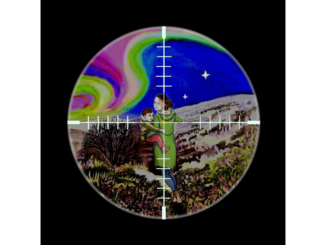
By Michelangelo Buonarroti – http://www.zeno.org/Kunstwerke.images/I/77j309a.jpg, Public Domain, Link
The Old Testament prophet Ezekiel is regarded as one of the three major prophetic books of the Old Testament, behind Isaiah and Jeremiah. After a period in the middle 20th century when scholars tended to think he was not the author and that it was of much later composition, it is now regarded widely as written by the author himself, albeit he probably wrote it and then continued to revise it and add to it through his life, and possibly by some of his followers after him. Interestingly, our Bible’s version, which is drawn from a Greek translation of the Old Testament in the second century BC (probably made in Alexandria, the capital of Greek Egypt), is shorter and different from the Jewish Old Testament version, which is regarded as being later by over two centuries and as having incorporated much later material. So the Christian version is much closer to Ezekiel’s original, which was composed in the first half of the 6th century BC.
Ezekiel the Man
Unlike many of the Biblical writers, Ezekiel does provide quite a lot of autobiographical material, and states that was born into a priestly family in Jerusalem circa 623 BC, during the reign of the king Josiah who had re-imposed Jehovah worship’s privileged position in a Judean kingdom that had sometimes flirted with polytheism. Prior to this time, Judah had been a vassal of the Assyrian empire, but the rapid decline of Assyria after circa 630 BC led Josiah to assert his independence and institute a religious reform stressing loyalty to Yahweh, the national God of Israel.
Following Josiah’s death in 609 BC, Judah became a vassal of the new regional power, the Babylonian empire. In 597 BC, following a rebellion against Babylon, Ezekiel was among the large group of Judeans, some accounts say 5,000, taken into captivity by the Babylonians. He appears to have spent the rest of his life in Mesopotamia, in a village they named Tel Aviv, by the River Chebar, a tributary of the Tigris in central Mesopotamia . A further and larger deportation of Jews from Jerusalem to Babylon occurred in 586 when a second unsuccessful rebellion resulted in the destruction of the city and its Temple and the exile of the remaining elements of the royal court, including the last scribes and priests. The various dates given in the book suggest that Ezekiel was 25 when he went into exile, 30 when he received his prophetic call, and 52 at the time of the last vision circa 571 BC.
Ezekiel was therefore a contemporary of Jeremiah, another witness to the decline and extinguishing of the last Hebrew kingdom (Israel having been crushed by the Assyrians a century earlier). Unlike Jeremiah, Ezekiel appears to have had no political role in these times and was more focused on purely theological matters, being taken hostage in the first Judean rebellion unlike Jeremiah who remained in Jerusalem and ultimately fled to Egypt at the time of the final fall and destruction of Jerusalem after the second rebellion. However, like Jeremiah and other prophets concerned with the similar fates of both Israel and Judah, he does ascribe the fall of Judah to its partial lapse back into paganism after Josiah’s death, something which preoccupies two of the sixth prophecies in the Book of Ezekiel.
What is novel about Ezekiel, however, is that in his later oracles about the restoration of Jerusalem and the return of the faithful exiles, he does not differentiate between those descended from Israel or Judah but sees them as a single people – the ‘Israelites’ – of one descent and religion, no longer divided by politics. He is the first writer of whom we know to do this.
The Book’s Structure and Main Themes
Ezekiel has the broad three-fold structure, based on three pairs of, or six, visions in total, found in a number of prophetic books: oracles of woe against the prophet’s own people, followed by oracles against Israel’s neighbours, ending in prophecies of hope and salvation:
- Prophecies against Judah and Jerusalem, chapters 1–24
- Prophecies against the foreign nations, chapters 25–32
- Prophecies of hope and salvation, chapters 33–48.
I would like to delve deeper into the third of these sets of prophecies in a further talk. What is striking about them is the vivid nature of the description of the visions, language reflected in the Book of Revelations which has more references to Ezekiel in it than to all the other books of the Old Testament together. Oddly, the rest of the New Testament contains hardly any allusions to Ezekiel, which has puzzled scholars, but St John, the reputed author of Revelations, appears to have consciously or unconsciously modelled his book of Ezekiel’s work; indeed the visions are very similar in some ways although Ezekiel is concerned about the restoration of earthly Zion, something that had happened over five centuries before St John, whereas Revelations is concerned with the coming of Heavenly Zion.
The book opens with a vision of YHWH, Yahweh or Jehovah. The book moves on to anticipate the destruction of Jerusalem and the Temple, explains this as God’s punishment for the rise of idolatry, and closes with the promise of a new beginning and a new Temple.
- Inaugural vision Ezekiel 1:1–3:27: God approaches Ezekiel as the divine warrior, riding in his battle chariot. The chariot is drawn by four living creatures, each having four faces (those of a man, a lion, an ox, and an eagle) and four wings. Beside each “living creature” is a “wheel within a wheel”, with “tall and awesome” rims full of eyes all around. God commissions Ezekiel as a prophet and as a “watchman” in Israel: “Son of man, I am sending you to the Israelites.” (2:3). Interestingly, the vision of God in his chariot riding in a cloud from the north is consistent either other Hebrew writers, and indeed of other ancient traditions, that God/the gods lived in the north among the mountains.
- Judgment on Jerusalem and Judah and on the nations : God warns of the certain destruction of Jerusalemand of the devastation of the nations that have troubled his people: the Ammonites, Moabites, Edomites and Philistines, the Phoenician cities of Tyre and Sidon, and Egypt.
- Building a new city: The Jewish exile will come to an end, a new city and new Temple will be built, and the Israelites will be gathered and blessed as never before.
Some of the highlights include:
- The “throne vision”, in which Ezekiel sees God enthroned in the Temple among the heavenly host;
- The first “temple vision”, in which Ezekiel sees God leave the Temple because of the abominations practiced there (meaning the worship of idols other than Jehovah, the official God of Judah);
- Images of Israel, in which Israel is seen as a harlot bride, among other things;
- The “valley of dry bones”, in which the prophet sees the dead of the house of Israel rise again;
- The destruction of Gog and Magog, in which Ezekiel sees Israel’s enemies destroyed and a new age of peace established;
- The final temple vision, in which Ezekiel sees a new commonwealth centred around a new temple in Jerusalem, sometimes called the Third Temple, to which God’s Shekinah(Divine Presence) has returned.
The unifying theme of all of Ezekiel’s writings is the issue of the literal presence of God – the Shekinah – without which the Hebrew people are lost because this is the guarantor that the Covenant between Jehovah and his people remains.
Such a preoccupation is not a surprise when one remembers that Ezekiel was born into a family of priests of the main temple in Jerusalem, and indeed his description of the God’s chariot may have been inspired in some ways by the way in which the Ark of the Covenant was carried. For him, God literally was present in the Holy of Holies in the temple of Zion and His leaving of it spelled the end of the state of Judah.
He may however have had, in part, a more prosaic motivation in writing his book. The Jews had been inconsistent in their devotion to Jehovah, flirting with other religions, in their homeland centred around His Temple. How additionally vulnerable they must have been when uprooted from their homeland and planted in a country populated with polytheists, and if they lost their faith, their utter assimilation as a people apart would have been in huge peril. So Ezekiel, living among the exiles, is there to explain what went wrong, the eventual downfall of their oppressors and their triumphant return home if they remain faithful. It worked, if anything the remaining faithful returned less divided than before, more wedded to Jehovah and more convinced that they were a special people.
Understanding the Meaning of Ezekiel
Beyond the striking language of his visions and his formative influence on at least some of the imagery of the Book of Revelations, does Ezekiel have any real significance for us as Christians as one might argue for Isaiah, Jeremiah or even Jonah?
It’s hard to say yes to be honest, beyond the general message of the prophets that turning away from Jehovah will lead a people to tribulation, even destruction. His scarce mention in the New Testament outside Revelations suggests even the Apostles and their disciples felt so too, despite being of Jewish backgrounds themselves. In some ways Ezekiel seems very Jewish, almost the first Jew in his novel conception of the Israelites in the way that the Venerable Bede was the first to conceive of and talk about the English ‘people’ rather than the inhabitants of a quarrelling bunch of different kingdoms of different origins.
Most of all, he isn’t concerned with the Coming of the Messiah, let alone the Second Coming, nor the universality and relevance of the one true God to all peoples of the world, but with more immediate and narrowly Jewish national and religious concerns. If one wanted to be cruel, one could see him as a blind alley for Christian theology, Indeed, even Later Jewish teachers and rabbis struggled with him and some regarded his work as not truly canonical, even dangerous or pornographic in its descriptive imagery, in the way that early Christian theologians worried about Revelations not being truly canonical, even dangerous as encouraging fanatics into wild speculations. He has been described as the ‘Father of Jewish Mysticism’.
In summary, perhaps it best to see his message as consistent with the other prophets, his imagery often more striking, but not to see him as the equal in profundity or relevance to we Christians today. His visions were more limited, more exclusively Jewish, and certainly not the equal fo those of Isaiah or Jeremiah.
© 1642again 2019
The Goodnight Vienna Audio file
Audio Player


